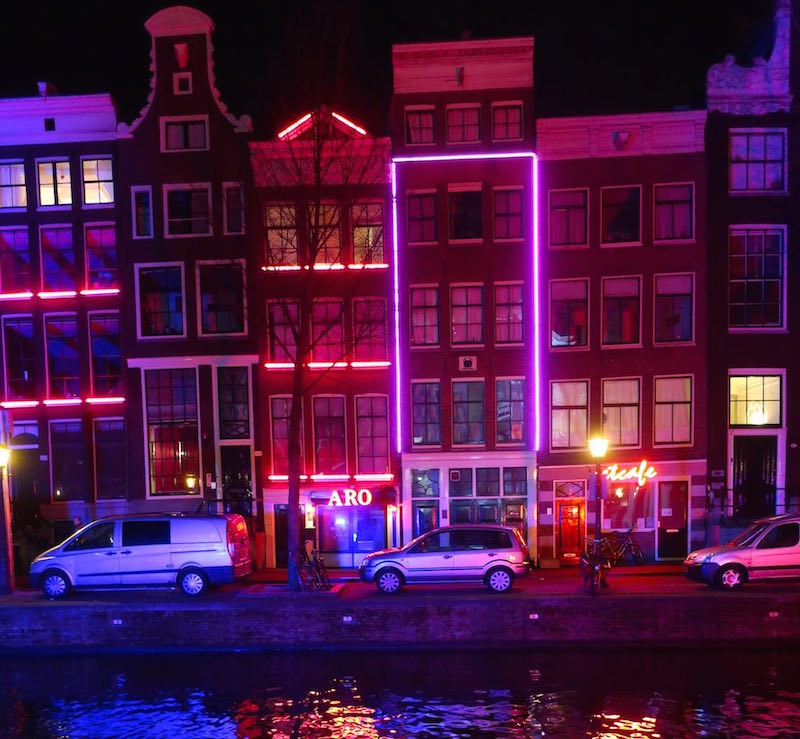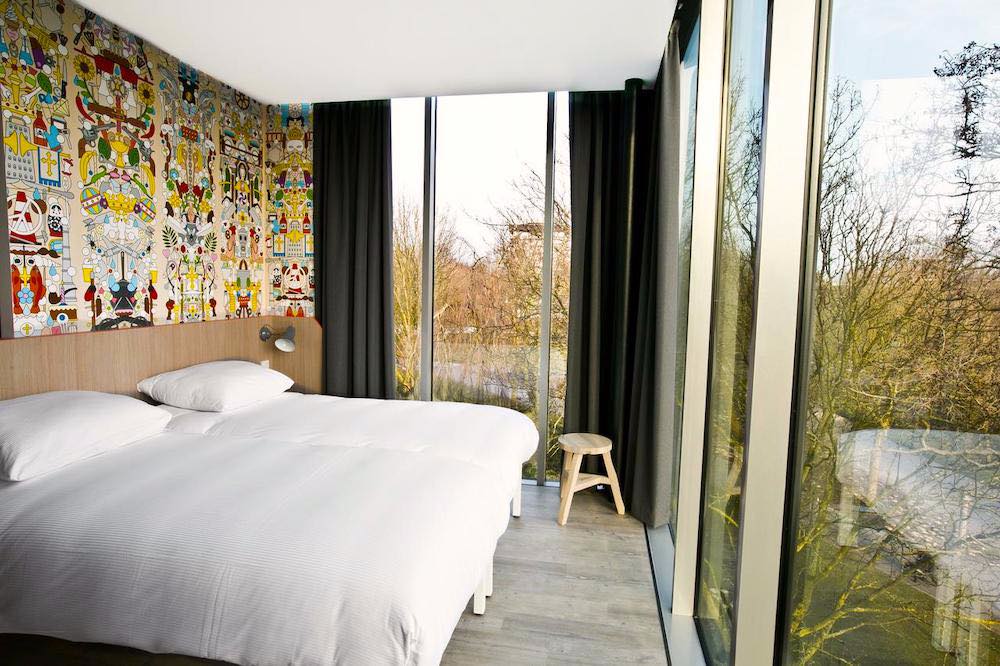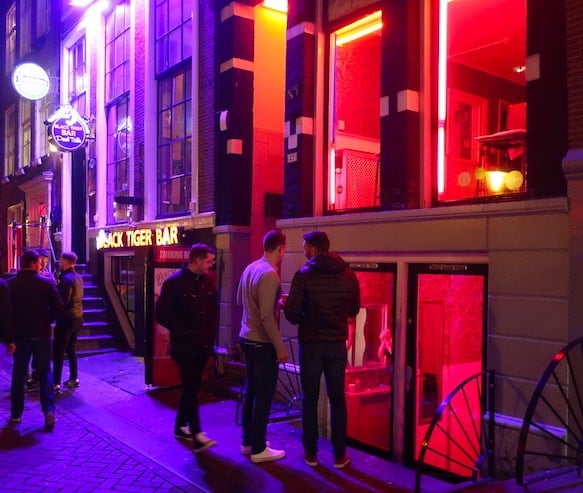Amsterdam Red Light District Wiki
Posted on: Januar 1, 2025

Amsterdam Red Light District Wiki
This Amsterdam Red Light District Wiki page contains information about its history, der Prostitution angesehen werden., inhabitants, red light windows (also known as window brothels), visitors, local companies, laws, inhabitants, Project 1012, tours, and whatnot.
It does not contain information about eskortieren because they do not work in the Red Light District.

The Red Light District of Amsterdam is the oldest part of the city. The area is called De Wallen in Dutch. The official district name is Burgwallen Oude Zijde. The word ‘Wallen’ comes from the canals that cross section Amsterdam Red Light District; the Oudezijds Voorburgwal and the Oudezijds Achterburgwal. A ‘burgwal’ means ‘defensive wall’ with a canal in front, but now the name is used for the canals itself, which were dug as a defense for the city.
Amsterdam Red Light District History
The Old Church in Amsterdam

De Oude Kerk in Amsterdam’s Red Light District.
The oldest building in Amsterdam is The Old Church – Oude Kerk in Dutch – and is located in the middle of the Red Light District, on the Oudekerksplein. This church dates back to the year 1306. In the app Amsterdam Audio Stories, Herman Vuijsje – famous Dutch sociologist – says this about the church:
‘The Old Church is not only the oldest church in Amsterdam, but also the largest and the lightest. Because of the weak soil the building was constructed as light as possible, it ‘floats’ in the swampy peat; with the many tall lancet windows and extensive use of wood this can be taken both literally and figuratively. Centuries ago, Amsterdammers used the Old Church as a market hall, but also as a place where nets were mended and sails repaired. The peat carriers used it as a shortcut, and they even hired young boys as dog beaters. Their job was to keep the dogs out of the church. And the prostitutes.’
Amsterdam Audio Tours: Explore Red Light District With 22 Experts In Your Pocket
Prostitution
Prostitution has always taken place in De Wallen/ Red Light District. One reason for this is that Amsterdam’s activities (bars, taverns/hotels, shops, companies, etc) always took place in this specific area. In other words, most men were in this part of the city.

Amsterdam Red Light District, 1905. Prostitutes waiting for men.
Another reason is that prostitution has always been here is because Amsterdam’s port used to be located where central station is currently located, just next to the Red Light District. Sailors arrived there by boat, walked to “de Wallen”, and spent their first money on booze and women.
Today, the Old Church is surrounded by 26 window brothels with Sexarbeiterinnen who literally stand in opposite of the church. The rest of the area counts 266 window brothels, meaning that the Red Light District of Amsterdam has 288 window brothels in total.
AMSTERDAM RED LIGHT DISTRICT MAP >
Warmoesstraat

The Warmoesstraat in Amsterdam Red Light District.
One of the main streets in the Red Light District is called the Warmoesstraat. Warmoes is an old, forgotten leafy vegetable. It’s hard to imagine, but in in the Middle Ages, the market gardens that provided the small city with fresh vegetables, were located alongside this street. The Warmoesstraat is the oldest street of Amsterdam. It also marks the Western border of the Red Light District, and it runs all the way from Central Station to the Damm Platz.
At the end of the Middle Ages (late 15th century), Amsterdam was the main religious destination of north-western Europe, and from the 16th century onwards it has been an important place of commerce, but it has always attracted tourists as well. The Warmoesstraat would be one of the first things people saw if they entered the city through the Olofspoort.
Amsterdam Oldest House
The oldest house of Amsterdam is also located in the Red Light District. On Warmoesstraat 90. This house dates back to 1485. Nowadays the house is used as a dance club for men only.
Condomerie
The first condom shop of the world is also situated on the Warmoesstraat. The popular shop was founded in April 1987 with the goal to improve sex education and to decrease STD’s and teen pregnancy in the Netherlands. In our app Amsterdam Audio Tours the owner – Theodoor van Boven – tells more about his special store and the importance of early sex education.
Amsterdam Red Light District Inhabitants

The Oudezijds Achterburgwal – one of the main streets – in De Wallen.
How many live in Amsterdam Red Light District?
The Amsterdam Red Light District, also known as De Wallen, covers an area of approximately 13 hectares (0.13 km²). Within this area is the Burgwallen-Oude Zijde district, which will have a population of 4,740 in 2024. This results in a population density of approximately 36,462 inhabitants per km.
2022
In 2022, Amsterdam Red Light District counted 4,550 inhabitants, which is also significant in a 2022 research by AlleCijfers.nl
The number of inhabitants in this district – Burgwallen Oude Zijde – increased by 215 inhabitants (that is 5%):
from 4.090 in 2013 to 4.305 in 2018.
In 2019, 10 residents decided to relocate, bringing the total of Red Light District inhabitants to 4.295.
Amsterdam broke a population record on November 30, 2019. The city had 872,428 inhabitants that day, more than the sixty-year-old previous high point. Which means that only 0.5% of the Amsterdam population lives in the Red Light District.
Gender
The population of Amsterdam Red Light District consists of 2.395 men (55.6%) und 1.920 women (44.4%).

Age Composition
The Red Light District counts 235 children, including toddlers, who live here. With 5.4%, they form the smallest group of residents in this area. Most people who live in “De Wallen” district are between the age of 25 and 45. The age distribution of Amsterdam Red Light District is as follows:
- 0 – 15 years: 235 inhabitants (5.4%)
- 15 – 25 years: 650 inhabitants (15%)
- 25 – 45 years: 2.210 inhabitants (51.3%)
- 45 – 65 years: 930 inhabitants (21.6%)
- 65 year or older: 380 inhabitants (8.8%)

Income
The average income per year for the residents of Amsterdam’s Red Light District is 33.600 euro. With that average income this district is ranked number 35 on highest income per area out of all the 97 neighborhoods in Amsterdam. This is shown in the graph below. (source)

Housing Prices Chart
The average housing price in Amsterdam’s Red Light District was 400.000 euro in 2018. The prices have increased with 65% since 2014 in this area. Some of the factors that have caused this are the increasing demand for housing and gentrification-plan Project 1012.
Amsterdam Red Light District Houses For Sale
Some houses in the Amsterdam Red Light District cost a lot of money, like these ones:

A 1.6 million house on the main street of Amsterdam Red Light District.
The historical canal-house above is located on the Oudezijds Achterburgwal – next to an erotic shop, a casino and the Bananenbar. The inside surface of this house is 253 square meters and it has 7 different rooms. It cost almost 1.7 million euros.

The apartment above is situated in one of the alleys of Amsterdam Red Light District. It has 201 square meters of space and cost 1.1 million euros.
Companies in Amsterdam Red Light District
This area counts a total of 1.945 business locations. 640 companies (32.9%) are in catering and trading, 460 (23.6%) in culture recreation and related services, 440 (22.6%) in business services, 180 (9.2%) in transport information and communication and 170 (8.7%) in financial services and real estate.

There are 1.945 businesses in Amsterdam Red Light District. (Source)
Sex Work
Prostitution is legal in the Netherlands, but not decriminalized. Dr. Kate Lister – Sex Work Expert and owner of the popular Whores of Yore Twitter account: “Legalizing sex work means the sex trade is still subject to very tight legal restrictions, such as where one can work. Decriminalisation removes all legal restrictions around sex work and means sex workers are afforded the same rights and protections as all other workers. Decriminalisation affords those in the sex industry the dignity and respect they deserve. It recognises sex work is a choice for many, and creates opportunities to reach and support those who suffer abuse and/or coercion”. (source)
Sex workers in the Netherlands would like to have sex work decriminalized.
Windows Amsterdam’s Red Light District

Amsterdam Red Light District, Dollebegijnensteeg with 14 window brothels.
Amsterdam has three Red Light District area’s. De Wallen is the biggest and most famous Red Light District in the whole country and most likely in the world. There are currently 292 window brothels in De Wallen area. The other two Red Light District area’s are called the Ruysdaelkade and the Singel area. Amsterdam has 365 window brothels in total.
The window brothels are managed by the male or female brothel operators. They rent the windows to the sex workers and are partly responsible for their safety. They also arrange the cleaning and hygiene in the window brothels. Brothel operators in Amsterdam have several windows which they rent during the daytime and nighttime.
Window brothels are usually small rooms – often located on the ground floor – containing a bed, a restroom and a washing table.
Windows Prices

Amsterdam Red Light District, Oudezijds Achterburgwal.
Window brothels in Amsterdam are usually rented two times a day. For a day-shift and a night shift. During the day the rent of a window brothel varies between 80 and 110 euros. At night, the window brothels fluctuates between 130 and 200 euros. In other words; the average rent for a window brothel in Amsterdam is 140 euros.
At night, between 6 pm and 6 am, the rent is higher because most sex workers like to work then due to the fact that at night they have more customers. The rent needs to be paid upfront to the brothel operator, before the start of a shift, meaning that sex workers usually need to get a few (2 -4) clients to get break-even.
Karte des Amsterdamer Rotlichtviertels
The map below shows the total number of windows in Amsterdam Red Light District, including the ones that were closed/bought by the City of Amsterdam, as result of Project 1012. The maps demonstrates that the number of window brothels decreased over the last years and that the Red Light District became smaller.

Green = open window brothels. Red = closed window brothels by government.
The windows marked with number 4 on the Oudekerksplein, next to the Oude Kerk, turned into a cafe called Quartier Putain. The two windows marked with 22 turned into a online radio station. The three window brothels marked with 21, on the Sint Annenstraat, turned into a recycle store. The two windows marked with number 5, in the Trompettersteeg, turned into a chocolate store.
All eight windows brothels in the Goldenbergsteeg have been unused and empty since the closure.

Amsterdam, September 2019. The window brothels in Goldbergsteeg are empty and neglected.
Project 1012
In 2007, the Municipality of Amsterdam started a locally well known gentrification-plan called Project 1012. Within a couple of years, the municipality bought 112 window brothels with tax money from brothel owners and closed them. Some of these former window brothels are still closed, but most of them were changed into chocolate stores, barber shops, art galeries, fashion shops, cafes, lunchrooms and whatnot.
The new tenants of the former window brothels can start a business here and pay low rent to subsided organizations that are funded by the government. Because of the low rent, the new entrepreneurs can do business here for a long time, even though they receive few customers and have low turnover.

Amsterdam Red Light District, Oudekerksplein. A.K.A. The Spanish Corner.
Part of Project 1012 was also the closure and displacements of several coffeeshops (Dutch term for cannabis cafes). Coffeeshop Old Church was one of those shops that was located next to the Old Church on the Oudekerksplein.
Amsterdam Audit Office: Project 1012 failed
Project 1012 changed Amsterdam’s Red Light District. The area has become considerably smaller and offers now things for a wider audience. In other words: more variety in a smaller area. The largest Dutch daily morning newspaper De Telegraaf claimed that Project 1012 costed 108 million euros. One window brothel owner (Charles Geerts) received 25 million euro tax money for selling his 70 window brothels to the City of Amsterdam. The official Amsterdam Audit Office analyzed Project 1012 und concluded that the project failed.

Former Amsterdam Alderman Lodewijk Asscher (Labour Party) in the Red Light District.
“Asscher’s (former alderman in Amsterdam and responsible for Project 1012) gut feeling that everything was wrong in the Red Light District can be right, says De Ridder (Director of the Amsterdam Court of Audit), but Project 1012 has never been able to point it out.” (source)
“The director of the Amsterdam Court of Audit would like to mention some of the successes of Project 1012 – the public space has improved, housing values have risen even faster than in adjacent boroughs – and he disputes that municipal officials have not done their best.” (source)
Amsterdam’s marketing company – formerly known as IAmsterdam, now as Amsterdam & Partners – is partly funded by the local government and was founded in 2013. While, Project 1012 was full in progress and changing the Red Light District, Amsterdam’s marketing company was enormously promoting the city to tourists. Since then, more people visit Amsterdam and more people visit a smaller Red Light District.
Amsterdam Red Light District Visitors

Amsterdam gets 18 million visitors per year, almost half of these visitors come from the Netherlands itself (source). The Red Light District gets 3.1 million people (17% of total) visitors yearly. The Red Light District of Amsterdam is the second most popular activity in the Netherlands. Only De Efteling – an amusement park – gets more visitors, namely more than 5.3 million per year.
Below, the top 13 attractions in the Netherlands. (The Red Light District is not included in this research, partly because Amsterdam Red Light District is an area which can be visited to free, just like the Zaanse Schans – which is included in the list below.)

Top 13 attractions in the Netherlands. (source)
Knowing that Amsterdam Red Light District was visited by 3.1 million people in 2017. It should be second on the list above.
With 14.675 visitors, the busiest day of the year in Amsterdam Red Light District was on Saturday 9 September 2017. This is according to research conducted by the business association Oudezijds Achterburgwal.

The number of visitors in Amsterdam Red Light District per hour in September 2017.
Their research measured the WiFi signal from the mobile phones of visitors on the main street of the Red Light District. Within this system, visitors who passed by several times a day are excluded. They were considered a resident or an employee within the area.

In 2017, 3.1 million people visited the Red Light District.
The least visited days in Amsterdam Red Light District were in November and February – during the low season – as shown in the graph above.
Pedestrian Friendly Streets in Red Light District
This research commissioned by the Dutch Environment Defense shows that from the 20 biggest municipalities in the Netherlands, pedestrians have most space in Amsterdam’s Red Light District. In this area, 60% of all space is designated for pedestrians making it the highest scoring neighbourhood in the Netherlands.
The reasons why pedestrian have so much space in the Red Light District is this: A lot of streets in this area can not be reached by car and many alley’s in this area are for pedestrians only. For example; The Old Church Square (Dutch: Oudekerksplein), Trompettersteeg, Molensteeg, Bethlemesteeg, etc. Cyclists and moped-riders can be fined if they ride here. Also, the Warmoesstraat – one of the main streets – can only be reached by vehicles who are in the possession of a transmitter than lowers an automatic metal pole. For example: the police, ambulances, fire brigade and some transportation companies. This measure creates more space for pedestrians and cyclists.










Elard- A most EXCELLENT synopsis, thank you. I feel that the District should not lose any more windows nor space for the sake of municipal money. The government is running the risk of losing the very attraction whose income it covets [email protected].
[…] you know that most windows are lit up in red in the Red Light District but some some windows are actually lit up in blue? When you see a blue lit window brothel during […]
[…] The Amsterdam tourism sector accounted for (69,195 jobs in 2018; 5% more than in 2017. In Amsterdam, 11% of all jobs are in tourism (source). This growth is due not only to the increase in the number of tourists, but is also attributable to leisure activities among Amsterdam residents. Example: in 2018, attraction park the Efteling had 5.3 million visitors. The Red Light District was visited by 3.1 million people. The Rijksmuseum had 2.3 million visitors and the Keukenhof attracted 1.3 million visitors. (source) […]
[…] Carmiggelt es uno de los 4000 habitantes del RLD y, sin embargo, dice que muchos visitantes no saben que la gente vive en el barrio […]
[…] Carmiggelt is one of around 4,000 residents of the RLD — and yet, she says many visitors are unaware that people live in the popular […]
[…] 4 000 personnes vivent dans le quartier De Wallen, selon Visite RLD d’Amsterdam, et une poignée d’entre eux ont participé à « We Live Here », une exposition visant à […]
[…] 4,000 people live in the De Wallen district, according to Amsterdam RLD tourand a handful of them have taken part in “We Live Here,” an exhibition to promote […]
[…] golf equipment, and bars. Round 4,000 folks stay within the De Wallen district, in response to Amsterdam RLD tour, and a handful of them have taken half in “We Live Here,” an exhibition to advertise […]
[…] 4,000 people live in the De Wallen district, according to Amsterdam RLD tour, and a handful of them have taken part in “We Live Here,” an exhibition to promote […]
[…] 4,000 people live in the De Wallen district, according to Amsterdam RLD tour, and a handful of them have taken part in “We Live Here,” an exhibition to promote […]
[…] 4,000 people live in the De Wallen district, according to Amsterdam RLD tour, and a handful of them have taken part in “We Live Here,” an exhibition to promote […]
[…] 4,000 people live in the De Wallen district, according to Amsterdam RLD tour, and a handful of them have taken part in “We Live Here,” an exhibition to promote […]
[…] 4,000 individuals dwell within the De Wallen district, in response to Amsterdam RLD tour, and a handful of them have taken half in “We Live Here,” an exhibition to advertise […]
[…] 4,000 people live in the De Wallen district, according to Amsterdam RLD Tourand a handful of them have attended “we live here,” An exhibition to promote respectful […]
[…] 4,000 individuals dwell within the De Wallen district, in response to Amsterdam RLD tour, and a handful of them have taken half in “We Live Here,” an exhibition to advertise […]
[…] 4,000 people live in the De Wallen district, according to Amsterdam RLD tour, and a handful of them have taken part in “We Live Here,” an exhibition to promote […]
[…] 4,000 folks dwell within the De Wallen district, based on Amsterdam RLD tour, and a handful of them have taken half in “We Live Here,” an exhibition to advertise […]
[…] 4,000 people live in the De Wallen district, according to Amsterdam RLD tour, and a handful of them have taken part in “We Live Here,” an exhibition to promote […]
[…] 4,000 folks reside within the De Wallen district, in accordance with Amsterdam RLD tour, and a handful of them have taken half in “We Live Here,” an exhibition to advertise […]
[…] 4.000 orang tinggal di distrik De Wallen, menurut Tur RLD Amsterdam, dan beberapa dari mereka telah mengambil bagian dalam “Kita tinggal di sini,” sebuah […]
[…] 4,000 people live in the De Wallen district, according to Amsterdam RLD tour, and a handful of them have taken part in “We Live Here,” an exhibition to promote […]
[…] is one of Amsterdam’s most historic areas that dates as far back as the 16th century. Every year, 3.1 million people from across the world visit it. The city’s Museum of Prostitution houses a complete […]